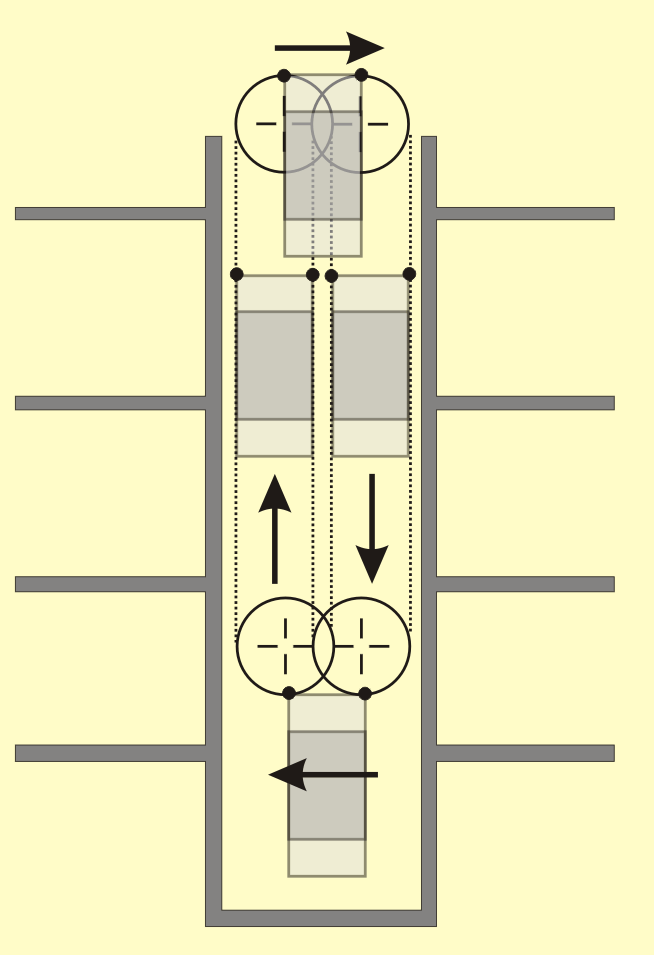Aufzug (G)
elevador (P)
elevator (E)
ascenseur (F)
ascensore (I)
paternoster, south africa
Those of you who live in or have visited Germany or Eastern Europe may be able to figure out the connection between our Word and Place. The village of Paternoster, a famous tourist destination, is located on the western or Atlantic coast of South Africa, about 150 kilometers north of Cape Town. It’s a fishing village, particularly known for its lobster fishery (the West Coast rock lobster, which, like the Caribbean lobster, does not have large claws like Maine lobster). Nearby to Paternoster is one of the largest oyster farms in Africa. Few, if any, elevators in the village, but Paternoster is known as the home of Wolfgat, a restaurant which serves a seven-course meal to just 20 diners, with many ingredients sourced from the sea and surrounding area. The restaurant was voted the World’s Best Restaurant in 2019 and, need it even be said, don’t drop in without a reservation.
Paternoster is spread out along the coast, notably along Long Bay, which has a fantastic beach. The village’s bright sunshine and whitewashed houses with blue shutters remind visitors of the Greek Islands, (think Cycladic architecture), but the water temperature…not so much. It averages about 17 degrees Celsius/64 degrees Fahrenheit. The best time to try a dip in the Atlantic is December to February (summertime in the Southern Hemisphere) but keep in mind, Paternoster is at latitude 39 degrees south, closer to Antarctica then most places in the world.

The origin of the name Paternoster for the village isn’t clear but in Latin “Pater noster” means our father and, in the Roman Catholic Church, refers to the Lord’s Prayer (whose first two words are “our father”). In medieval times, a Pater Noster cord contained either 50 or 150 beads and was used to recite the Lord’s Prayer 150 times. Paternoster also refers to special beads in a rosary (a necklace made of beads) occurring at regular intervals, telling the user that it is time to recite the Lord’s Prayer.
So, keep in mind that image of a necklace with special beads interspersed at certain intervals. A paternoster elevator (or lift for you Anglophiles) is a chain of open boxes or compartments that move (slowly) on a cable up and down inside a building without stopping. The compartments, smaller than most regular elevators, have no doors and do not stop so passengers just step on and off. On any floor, there are two openings to access the compartments. In the picture below, the compartments going by on the left are going up and the compartments going by on the right are heading down. The compartments remain vertical at the top and bottom of the building, a little bit like a Ferris wheel, so you can stay in your compartment and make a full circle.

Paternosters were invented in Britain in the 1860s. They were popular, particularly in Europe. Since they didn’t stop and start and there were no waits for doors to close, they could carry more passengers. There aren’t very many paternosters left, with those that still survive mostly in Germany and Eastern Europe. For some reason, Germany has the most paternosters still operating (231 as of 2015).
Paternosters are only designed for transporting people. Not things like ladders, strollers or suitcases which could stick out from the compartment and block the movement of the compartments. Historically, they are much more risky to passengers than conventional elevators. And they are particularly risky to disabled passengers, the elderly or children who might not be able to enter the compartment fast enough. West Germany (pre-unification) banned new installations in 1974 and the German government has tried to ban the operation of existing paternosters several times, meeting stiff resistance from the population.
Paternosters seem fun but without conventional elevators and their buttons, closing doors and empty elevator shafts, we wouldn’t have such great movie scenes as Cary Grant spotting his supposedly dead first wife in My Favorite Wife; Shirley MacLaine as the office building’s elevator operator meeting Jack Lemmon in The Apartment; Buddy in Elf activating every button on the control panel of a high-rise elevator; blood seeping out of the closed elevator doors in The Shining; Angie Dickinson encountering a murderer as the elevator doors open in Brian DePalma’s Dressed to Kill; or Bruce Willis as John McClane using the elevators and their empty shafts to his advantage against Alan Rickman, a West German terrorist, in Die Hard.